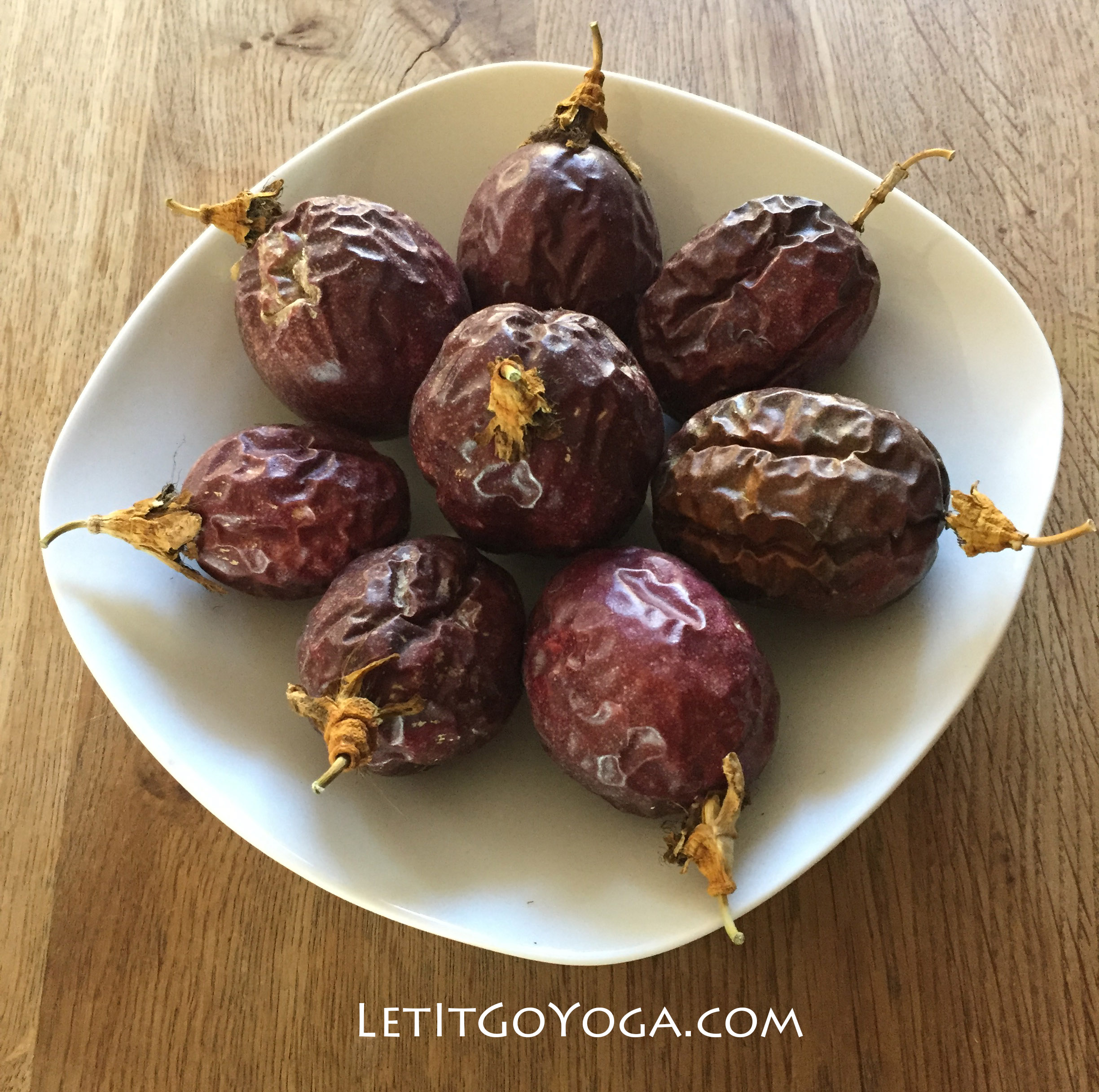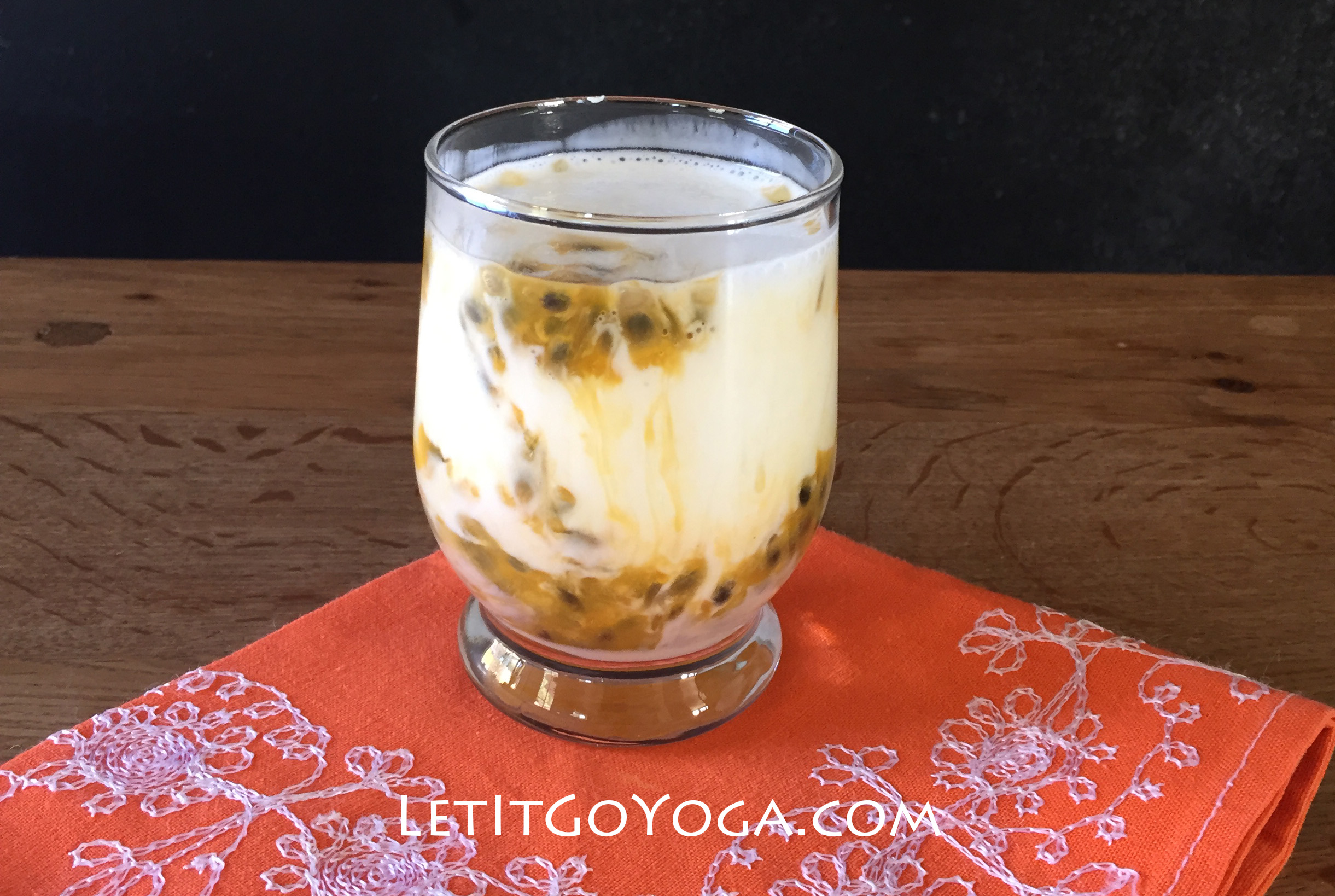All my life (well, no, that is not quite true, as it can not be “ALL my life”, since I have heard, tasted and smelled passion fruit only for the last, say, 25 years of my life… ) I had thought that the reason the passion fruit is called passion fruit is (logically!) because it had some absolutely magical and undeniable aphrodisiac properties. Logical, right?! And I had been describing it to my friends (back home in Latvia who had not tried it) as something so magical that its smell alone makes you go weak in your knees… Well, well, well – I was wrong, as it turns out (and, oh, how happy my kids are going to be reading this last sentence). So, as it turns out, passion fruit is called passion fruit because of its flower and not because of its fruit at all! Plus it has nothing to do with aphrodisiac properties…
So, here we go : the Encyclopaedia Britannica (1885), states that “(…) the name passionflower – flos passionis – arose from the supposed resemblance of the corona to the crown of thorns, and of the other parts of the flower to the nails, or wounds, while the five sepals and five petals were taken to symbolize the ten apostles — Peter … and Judas … being left out of the reckoning. “ And Wikipedia says: “The passion fruit is so called because it is one of the many species of passion flower, the English translation of the Latin genus name, Passiflora. Around 1700, the name was given by missionaries in Brazil as an educational aid while trying to convert the indigenous inhabitants to Christianity; its name was flor das cinco chagas or “flower of the five wounds” to illustrate the crucifixion of Christ, with other plant components also named after an emblem in the Passion of Jesus”. And yes, late Latin word “passionem” (nominative- passio) means “suffering, enduring”.
I was a tad disappointed and also intrigued, learning all the above, but… back to the actual fruit, or more precisely, berry : within any given passion fruit/ berry there are, apparently, typically 250 black seeds! I have to admit that I have not counted them myself, so I will take this information face value, as there are, for sure, many, many seeds in each and every fruit! And each of those seeds is surrounded by a membranous sac filled with pulpy juice. The flavor of the juice is a bit acidic and musky. Passion fruit is widely grown in tropical and semitropical regions of the world. If you start researching where and how the passion fruit is commonly known, used and consumed, you will find a long list of countries: New Zealand, Australia, South Africa, Brazil, Colombia, Mexico, Dominican Republican, Paraguay, Peru, Puerto Rico, Philippines, Portugal, Sri Lanka, India, Indonesia, and countries in East Africa, and also Hawaii. In US passion fruit can be grown in Florida and California.
We got our last big batch of passion fruit from our friends right here in Goleta, when they were generously sharing their bounty. (We also learned that the best ones are the ones with the most wrinkled skin… and that one has to be patient while waiting for them “to wrinkle up” to their delicious perfection!)
As amazing and startling as this discovery (that I was so wrong) was, it also was a joyful one, as I am learning and discovering new things and information. And I think that I am allowed to still believe that the fruit has the properties that I so want to attribute to it, right?
Here is a simple 3 ingredient recipe of a drink that I find just irresistible – maybe because it tastes so delicious and is so healthy, and maybe because I discovered it after my husband made it for himself (I think that he was truly improvising!) and was eager to share – it was luscious! Enjoy!
The Magical Passion Fruit Drink (smoothie)
-
Start by scraping out the seeds and juice of 2- 4 passion fruit ) or more if you are going to use a big glass of this deliciousness or if you want “a slightly more passionate” drink)
-
Add plain, unsweetened (cultured) goat milk kefir
-
Then add /drizzle over some honey
ENJOY!
PS
You have an option of mixing it all together straight away and enjoying it…
OR
… start by first observing how the passion fruit seeds and pulp and juice react/talk to kefir and how gently the honey is settling into its new home- the delicious mix of goat milk kefir and passion fruit… – enjoy!
Written by Indra Strong, Certified Let It Go Yoga teacher.
Want to know more about Let It Go Yoga? Start here with our Diaphragmatic Breathing Video!



I think you might find this research paper enlightening and some further research into passion fruit as the seeds and leaves are well known afrodesiacs and much research has been done to prove that… https://pubmed.ncbi.nlm.nih.gov/12722149/